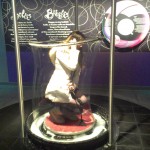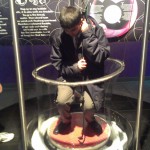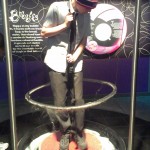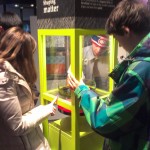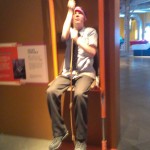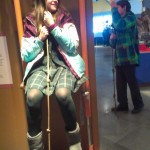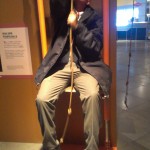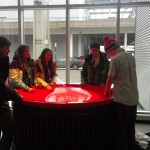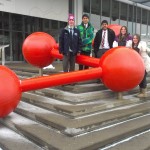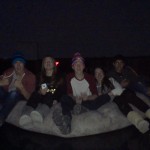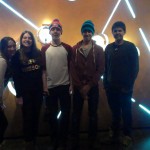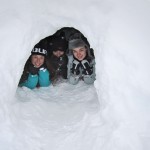On Friday, January 17, we five exchange students, Jack, Liam, Mikayla, Maria Gabriela and Atishay – who had just arrived from India the previous day, all gathered in Ms. Shadley’s office to be briefed about the day’s events. We met up with Veronica, our guide, put our coats on and headed out. The first stop was on the way to the metro, where we got to drop into Starbucks and grab something to eat for recess. After that we bought our tickets and hopped on the train. When we arrived at our stop, Lionel Groulx, it was snowing, so we went in search of a place to eat lunch, with no luck. Instead we decided to eat at the science museum where we were headed. Once we had eaten, we went into the museum. It was a great deal of fun; we joked and ran about, we got to use inventions such as the life-sized bubble maker and the upside down room. All in all the day was fun, and we learned a lot.
Unlike this museum where we could laugh and fool around a little bit, the next trip, on the following Monday, was to the Holocaust Museum. On this outing learned about the suffering and pain the Jews had to go through in WWII, how they lost everything they loved and how some of the Holocaust survivors ended up in Montreal. Along with these trips, we have seen different parts of the city and have used various means of transportation.
On Friday, January 24, we met once again in Ms. Shadley’s office in the morning, were briefed on what we were going to do for the day, and suited up for the -30 oC degree weather. On this day we were traveling to the planetarium, which required us to walk down to the metro, via a Second Cup coffee store. After grabbing something to eat and drink, we hopped on the metro and again travelled to the Lionel Groulx train station. This time we were traveling to the outskirts of town, so we switched train lines to get to the Viau station. When we got to the planetarium we started off by going to Continuum, an immersive film that takes you on a journey through space, experiencing the world as we know it in a different way. The film is projected onto a domed roof, and requires you to lie on the ground in order to see it. After watching the surprisingly realistic film, we went to the space and meteor exhibition, then had lunch and hopped back on the metro to head back to school.
To date, we have managed to take in a whole lot of the Canadian culture and lifestyle living with our exchange families, and experience a great deal of the city we are living in. In addition to the above field trips, we have also visited typical bagel restaurants and have learned the difference between Canadian and American bagels. We had also had a closer look at Old Montreal. From watching an immersive film about space to learning about the history behind Montreal, and the Holocaust, we have had experiences that will stay with us forever.
–Jack Tizzard (Westminster School – Adelaide, Au), Liam Leach (Carey Grammar School – Melbourne, Au), Atishay Modi (Daly College – Indore, India), Mikayla Opie (Westminster School – Adelaide, Au) and Maria Gabriela Peña (Colegio Anglo Colombiano – Bogota, Colombia)


